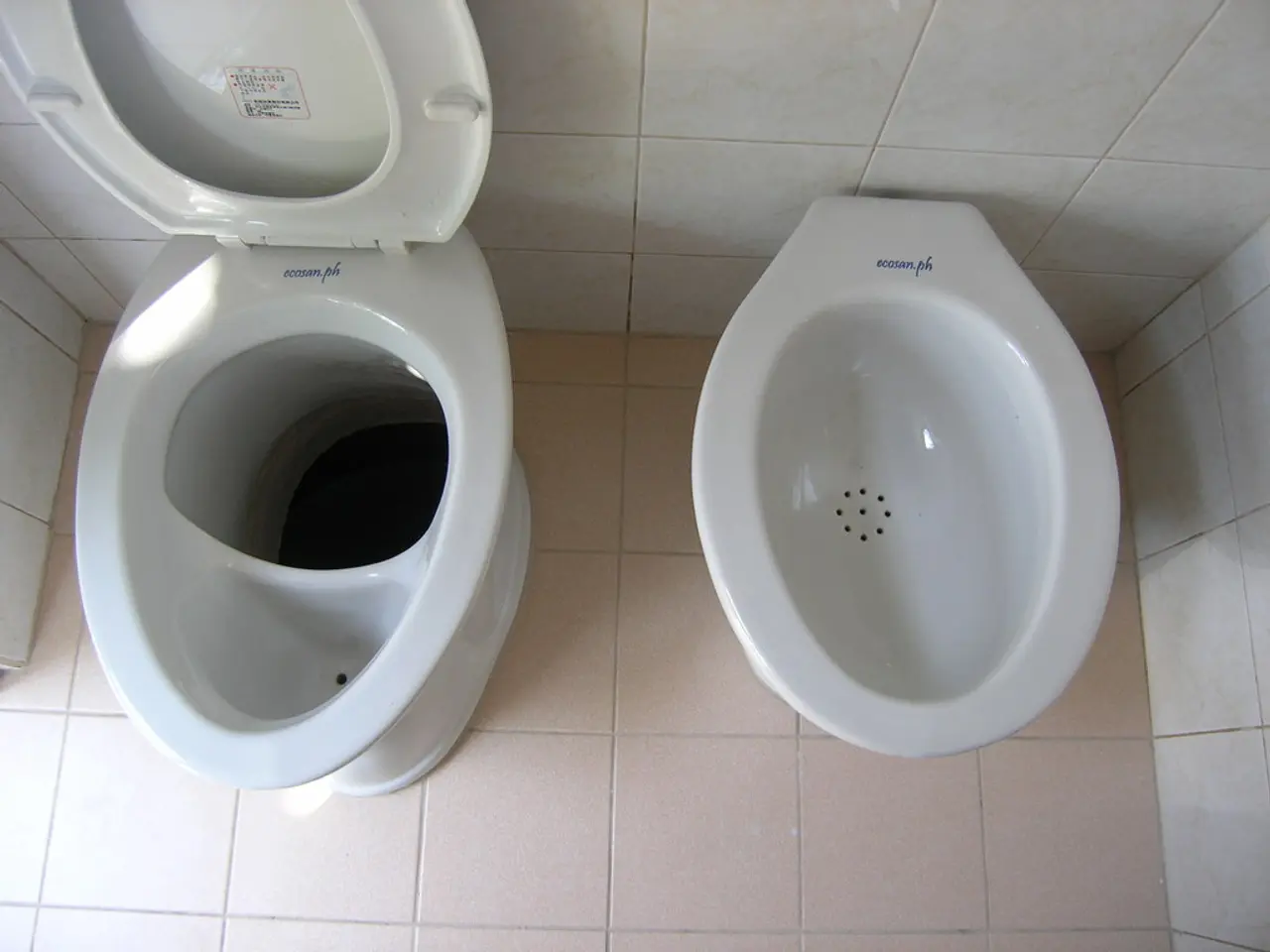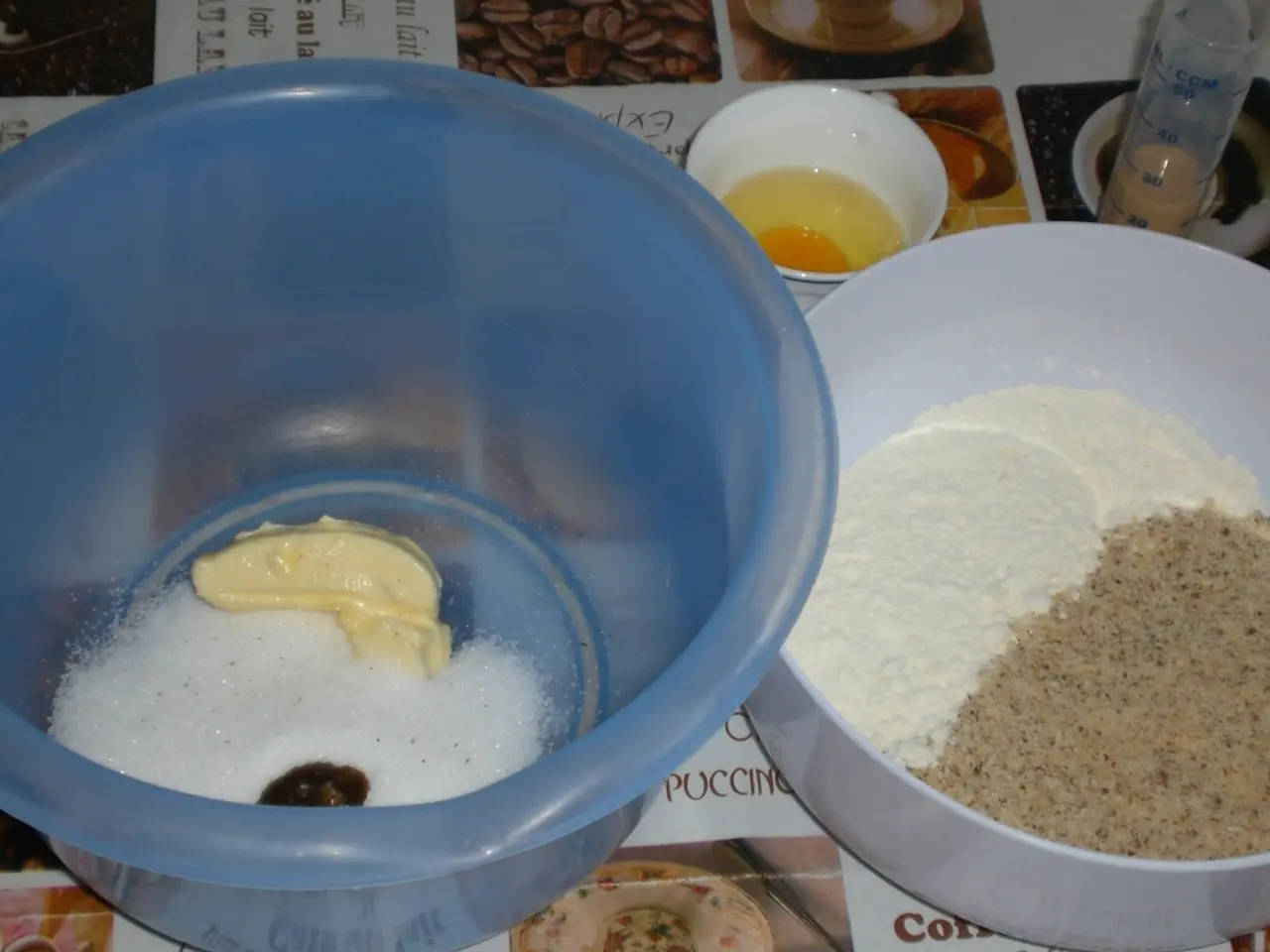Gout with Tophi: Symptoms, Treatment Options, and Further Information
In the world of arthritis, gout stands out as a particularly painful and debilitating condition. One of its most severe stages is tophaceous gout, a condition characterised by the formation of masses called tophi around affected joints and tissues.
Tophi can affect any joint or soft tissue in the body, including those in the ear. These visible swollen nodules can cause physical deformity, joint or tissue damage, reduced range of motion, disability, nerve pain, potential infection if they break open and drain, and even aesthetic concerns.
Gout occurs when blood levels of uric acid are too high due to either the body producing too much uric acid or the kidneys not filtering out enough. Common risk factors for tophaceous gout include chronic hyperuricemia primarily due to decreased renal excretion of urate, genetic predisposition affecting uric acid transport, male gender, advancing age, obesity, hypertension, excessive alcohol consumption (notably beer), diets high in purines (such as red meat and shellfish), and comorbid medical conditions like diabetes, heart disease, and chronic kidney disease.
Diagnosing tophaceous gout involves taking a sample from a suspected tophi and checking for uric acid crystals. Doctors often diagnose this condition in people with chronic, untreated gout.
Effective treatment for tophaceous gout centers on long-term urate-lowering therapy (ULT) to reduce serum urate levels below target thresholds, typically less than 0.36 mmol/L, or less than 0.3 mmol/L if tophi are present. Allopurinol is a common first-line agent for this therapy. Alongside pharmacotherapy, lifestyle and dietary modifications are important: reducing intake of red meat, shellfish, beer, and fructose-containing foods and drinks; maintaining adequate hydration; and achieving gradual weight loss if overweight. Early initiation of ULT is advised, especially for patients with recurrent flares, tophi, or imaging evidence of joint damage, to prevent progression to chronic deforming arthritis caused by ongoing urate deposition.
In addition to ULT, several medications are used to treat gout symptoms. These include colchicine, indomethacin, interleukin-1 blockers, corticosteroids, allopurinol, probenecid, and febuxostat. During flares, people can reduce gout symptoms using pain relievers or anti-inflammatory medications alongside ice, rest, and elevation.
It's important to note that many common medications, including diuretics, beta-blockers, aspirin, and cyclosporine, can increase uric acid levels. This means that people with gout should be cautious when taking these medications and discuss any potential risks with their healthcare provider.
Tophaceous gout can also affect people who have undergone a heart transplant. In such cases, the management of gout may require close coordination between the transplant team and the rheumatologist.
Approximately 40% of people with gout develop tophi. Risk factors for gout also include having a family history of the condition. With proper uric acid-lowering treatment, it tends to take at least a few months and possibly years for tophi to resolve.
In conclusion, preventing and treating tophaceous gout involves controlling hyperuricemia through medication and lifestyle changes targeting identified risk factors to stop urate crystal accumulation and joint damage. By understanding the causes, symptoms, and treatment options for tophaceous gout, individuals can take steps to reduce their risk and manage this challenging condition more effectively.
- Scientific studies indicate that people with a family history of psoriatic arthritis have an increased risk of developing tophaceous gout, one of the chronic diseases associated with health-and-wellness and fitness-and-exercise.
- In the medical world, diagnosing tophaceous gout involves testing for uric acid crystals in samples taken from visible swollen nodules, a common symptom of this chronic condition that can potentially lead to joint damage and disability.
- Treatment for tophaceous gout often includes long-term urate-lowering therapy, such as medications like allopurinol, in conjunction with lifestyle modifications, like reducing intake of foods high in purines like red meat and shellfish and maintaining a healthy weight, to manage this chronic medical condition and prevent further damage.




